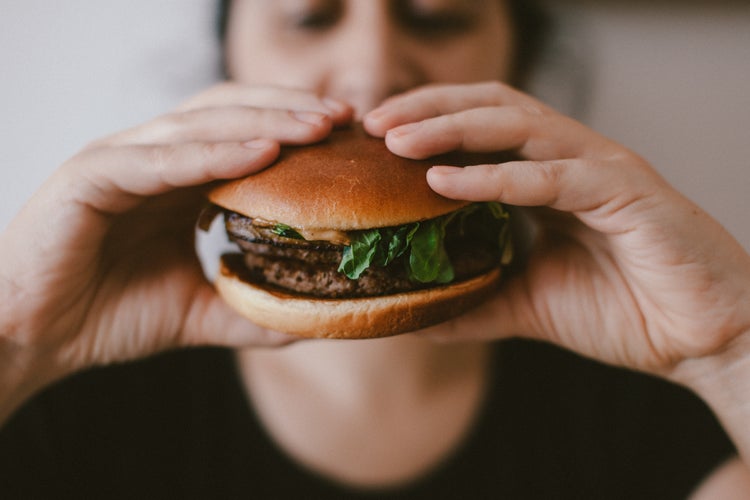Impossible Meat has been the latest trend among vegans and vegetarians, but a lot of meat eaters also seem to like it, so here is everything you need to know about Impossible Meat.
Have you ever wondered why an Impossible Meat burger tastes just like, or even better than, a real meat burger? Me too, and it got me thinking: how does it all work? How can there possibly be a meat alternative that contains no meat but tastes like the real thing? So much of this seems too good to be true, but with the expansion of food technology and demand for vegan/vegetarian options, Impossible Meat and Beyond Meat have stepped into what used to be a niche market to offer healthy, tasty, and environmentally friendly plant-based meat.
Impossible Meat v. Beyond Meat
These two meat alternative competitors are currently dominating the marketplace – but what’s the difference? And which should I buy?. The difference in composition between the Impossible and Beyond burger is that Impossible meat is a gluten-free burger made largely of soy protein concentrate, coconut oil and sunflower oil, along with genetically engineered heme, which is made from soy to give it that meat-like flavor. Beyond Burger, on the other hand, is mostly composed of pea protein, pressed canola oil, coconut oil, and seasonings. It’s not genetically modified and is free of soy and gluten. Additionally, it uses beet juice extract to give it a more meat-like color.
So, which one should you buy? Well in terms of cost, both beyond meat and impossible meat cost $2.95 more than regular meat burgers. This is because in general, plant-based meat industries are in competition with regular meat industries. Plant-based industries have been trying to lower their selling price of their products to make it more desirable and accessible to consumers. This is difficult to achieve because plant-based industries are new and do not have decades of experience or the economies of scale needed that meat industries have. Although, this will hopefully change in the next few years.
The Nutritional Facts
Both Impossible and Beyond Meat have similar nutritional value to that of regular meat. On the positive side, both meat substitutes contain significantly lower calories, fat, and cholesterol. Both meats also have more fiber and iron than regular burgers. Plant-based meat is typically higher in sodium because they come pre-seasoned. The sodium content should be taken into consideration when switching to plant-based meat, but it shouldn’t deter one from switching.
How does Impossible Meat compare to regular meat? Impossible Meat is basically made out of soy, and soy is good for our bodies because it is high in protein and can help reduce the risk of a significant number of diseases or health problems that, otherwise, we could get from eating meat. Soy can help reduce diseases such as heart disease, stroke, cancer, etc. The risk for these diseases can also be increased by a high consumption of meat.
Moreover, a big reason why impossible and beyond meat are great alternatives to meat is because they both have very meat-like characteristics in terms of texture and appearance. As for taste, I would even go as far as to say that plant-based burgers in my opinion taste much better than meat burgers. One main reason behind this is because plant-based burgers don’t contain much fat, and when biting into the burger, oil doesn’t seep out of it.
The Environmental Effects
People go vegan/vegetarian for all sorts of reasons, namely for animal rights and environmental purposes. One thing to consider is how meat production affects the environment. The process of producing meat burgers releases more greenhouse gases, which is a main contributor to climate change, whereas impossible meat has a 90% less carbon footprint. Additionally, meat production requires an immense amount of water, this contributes to the global problem of water scarcity. On the other hand, Impossible meat uses up 99% less water than meat burgers.
The biggest downside to meat industries is the way they farm and slaughter animals. Meat industries are known to be very cruel and inhumane when it comes to animal rights. They keep animals in overcrowded cages where these animals lose their minds because they don’t have the space to function or have the habitat that they need. Therefore, these animals are not given the right to exist in their own habitats, instead meat industries are taking advantage of the one basic need that these animals have.
The Future
Market data research shows that plant-based industries such as the Impossible Meat will be what the future of food strives to be. This is because people and companies are becoming more aware of climate change and the environmental concerns regarding meat industries. Moreover, people are also becoming more aware of their diet and the health problems attached to eating a large amount of meat. Finally, animal rights activists have been rising in numbers and support groups for this cause have been increasing. This is largely because people are realizing the ethical problems that arise from the way that meat industries have been producing their products. Therefore, educating people about plant-based meats and their benefits for our bodies, the environment, and animal rights can go a long way in shaping the future of what industries and people should strive to achieve.


